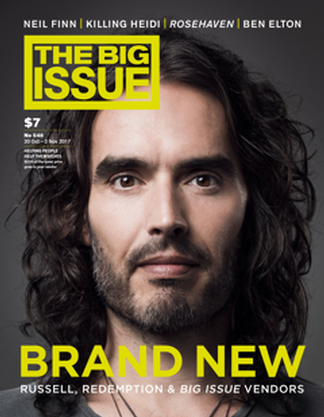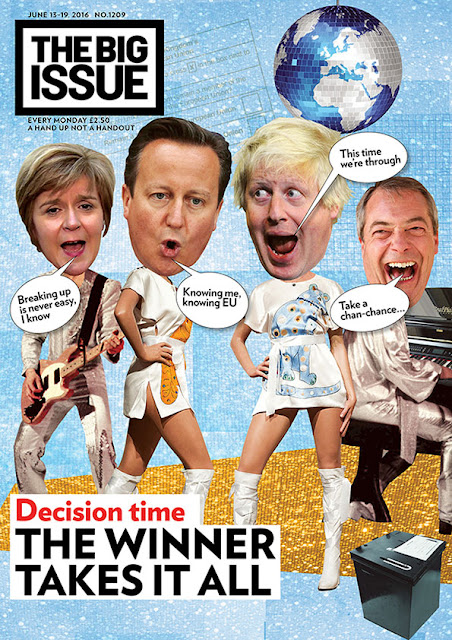HOW DO RADIOHEAD AND MASSIVE ATTACK REPRESENT THEMSELVES WITHIN THEIR MUSIC VIDEOS
These two songs represent very different topics, with the lyrics in each representing almost opposite emotions and feelings towards others. Firstly, 'Unfinished Sympathy' by Massive Attack, presents the theme of romantic love. The lyrics used by the artists create a quite possessive and strong kind of affection towards the individual which the lyrics are aimed at. 'I know that I've been mad in love before', here the adjective 'mad' creating the possession behind the message of love. As well as this, the use of the first person throughout the song lyrics make the audience seem more attached to the writer as the story which is being shared becomes much more personal.
Whereas in Radiohead's 'Burn the Witch', the songs lyrics create an evil and negative theme throughout the entirety of the song. This is done by the constant reference to 'witches', for example 'red crosses on wooden doors' and 'if you float you burn'. Here these references to the Shakespearian era where if women were suspected to be a witch then a 'red cross' would be painted on their door and torturing techniques, like waterboarding were used. Radiohead's use of this reference to witches ties in with the then chaotic moment in global politics critiquing the nativism-embracing leaders in the UK and throughout Europe. Possibly using the reference to the British childrens TV series the 'Trumptonshire Trilogy', to America's name-like Donald Trump.
Similarly, Radiohead also references the 1973 British horror film 'The Wicker Man'. This story of a devote Christian detective going to an island to investigate a disappearance, where he finds a mad community who's farms depend on pagan rituals, as they believe. As well as this, the inspector soon becomes their sacrifice - as is clearly seen within Radiohead's video, a similar event occurs. The fact that this reference is so obvious, rather than being underlying, adds emphasis to the meaning behind it. The idea that no matter how wrong an event or action is, if a person or community believe it is right for their religion then it will occur. A spokesperson for Radiohead did state that the aim of this reference was to get the audience thinking; and has recently stated, years later, that this idea is still relevant, with events occurring all over the world today due to beliefs within communities.
In these two videos the artists have been represented in very different ways; with the first clear main difference being the physical appearance in the videos. Radiohead do not appear in their animated video for 'Burn the Witch', whereas in 'Unfinished Sympathy' by Massive Attack, the vocalist Shara Nelson is present throughout. Due to this the artist is represented in comparison to the video she is present in; showing her walking through an area of poverty in New York's streets. This representation of street life contrasts with Shara's appearance, dressed in all black, the artist standing out from the background scene in the music video. Massive Attack may have used this presentation of 'street life' to raise awareness of the society which the audience live in - referencing the difference between styles of living. As a well established band, Massive Attack have created this video almost ironically, helping to make the audience think of the lack of equality within society.
In the music video 'Burn the Witch' the use of the 'Trumptonshire Trilogy' style of animation creates a child-like approach to a video conveying the polar opposite context. The video, best described by critics as 'unsettling', manages to create this eerie affect by the use of juxtaposition between visual and verbal. Due to this, Radiohead are represented as a band who are alternative, not wanting to follow the rules of a typical music video. I personally feel this representation of the artists with both music videos is very successful as each portray their wanted messages, be it using unique techniques.
Within both music videos, the styles of filmmaking play a large role in how the artists are represented. Firstly, with Radiohead using animation to reference the 'Trumptonshire Trilogy', creating a child-like visual to their video. Whereas Massive Attack, use a more mainstream idea, though take this and change it to make it more effective. Their use of one continuous shot throughout the video creates a simplistic feel to the video, though without loosing the message behind the video. The use of 'street life' within the video, referencing elements of poverty, links in with this simple style of video. Due to this use of a basic video style, it matches in well with the background visuals, empathising the awareness which Massive Attack intended to create.
Oppositely, the visuals in the 'Burn the Witch' music video fit the lyrical content though as well as contrasting the childlike theme of animation. This just of a juxtaposition help to produce the horror element to their video, matching in with the reference to the film 'The Wicker Man'.
The bands different approaches to genre and theme within their music means that the fans they generate have different tastes. Therefore the two separate audiences will both appreciate their music videos, gaining an emotion pleasure from the stories told in each. Radiohead's controversial message will have connected well with fans as they will appreciate and agree with the political agenda they were referencing. Whereas fans of Massive Attack will have understood the use of their simplistic filmmaking to ironically reference the music industry, and how success doesn't mean they are unaware of what else is going on within the world.
Whereas in Radiohead's 'Burn the Witch', the songs lyrics create an evil and negative theme throughout the entirety of the song. This is done by the constant reference to 'witches', for example 'red crosses on wooden doors' and 'if you float you burn'. Here these references to the Shakespearian era where if women were suspected to be a witch then a 'red cross' would be painted on their door and torturing techniques, like waterboarding were used. Radiohead's use of this reference to witches ties in with the then chaotic moment in global politics critiquing the nativism-embracing leaders in the UK and throughout Europe. Possibly using the reference to the British childrens TV series the 'Trumptonshire Trilogy', to America's name-like Donald Trump.
Similarly, Radiohead also references the 1973 British horror film 'The Wicker Man'. This story of a devote Christian detective going to an island to investigate a disappearance, where he finds a mad community who's farms depend on pagan rituals, as they believe. As well as this, the inspector soon becomes their sacrifice - as is clearly seen within Radiohead's video, a similar event occurs. The fact that this reference is so obvious, rather than being underlying, adds emphasis to the meaning behind it. The idea that no matter how wrong an event or action is, if a person or community believe it is right for their religion then it will occur. A spokesperson for Radiohead did state that the aim of this reference was to get the audience thinking; and has recently stated, years later, that this idea is still relevant, with events occurring all over the world today due to beliefs within communities.
In these two videos the artists have been represented in very different ways; with the first clear main difference being the physical appearance in the videos. Radiohead do not appear in their animated video for 'Burn the Witch', whereas in 'Unfinished Sympathy' by Massive Attack, the vocalist Shara Nelson is present throughout. Due to this the artist is represented in comparison to the video she is present in; showing her walking through an area of poverty in New York's streets. This representation of street life contrasts with Shara's appearance, dressed in all black, the artist standing out from the background scene in the music video. Massive Attack may have used this presentation of 'street life' to raise awareness of the society which the audience live in - referencing the difference between styles of living. As a well established band, Massive Attack have created this video almost ironically, helping to make the audience think of the lack of equality within society.
In the music video 'Burn the Witch' the use of the 'Trumptonshire Trilogy' style of animation creates a child-like approach to a video conveying the polar opposite context. The video, best described by critics as 'unsettling', manages to create this eerie affect by the use of juxtaposition between visual and verbal. Due to this, Radiohead are represented as a band who are alternative, not wanting to follow the rules of a typical music video. I personally feel this representation of the artists with both music videos is very successful as each portray their wanted messages, be it using unique techniques.
Within both music videos, the styles of filmmaking play a large role in how the artists are represented. Firstly, with Radiohead using animation to reference the 'Trumptonshire Trilogy', creating a child-like visual to their video. Whereas Massive Attack, use a more mainstream idea, though take this and change it to make it more effective. Their use of one continuous shot throughout the video creates a simplistic feel to the video, though without loosing the message behind the video. The use of 'street life' within the video, referencing elements of poverty, links in with this simple style of video. Due to this use of a basic video style, it matches in well with the background visuals, empathising the awareness which Massive Attack intended to create.
Oppositely, the visuals in the 'Burn the Witch' music video fit the lyrical content though as well as contrasting the childlike theme of animation. This just of a juxtaposition help to produce the horror element to their video, matching in with the reference to the film 'The Wicker Man'.
The bands different approaches to genre and theme within their music means that the fans they generate have different tastes. Therefore the two separate audiences will both appreciate their music videos, gaining an emotion pleasure from the stories told in each. Radiohead's controversial message will have connected well with fans as they will appreciate and agree with the political agenda they were referencing. Whereas fans of Massive Attack will have understood the use of their simplistic filmmaking to ironically reference the music industry, and how success doesn't mean they are unaware of what else is going on within the world.


Comments
Post a Comment